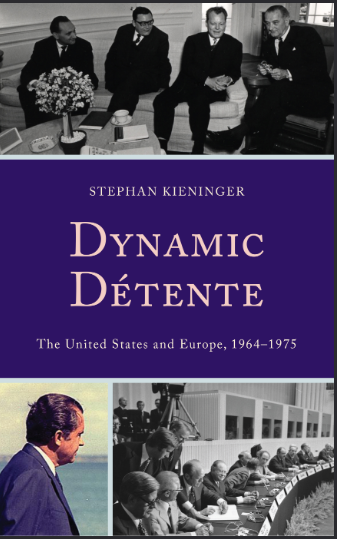موضوعات
آموزش و پرورش
ادبیات و زبان
پزشکی، دندانپزشکی و داروسازی
تاریخ و جغرافیا
داستان و رمان
دیگر
دین و فلسفه
روانشناسی
ریاضیات و آمار
سلامتی، تناسب اندام و رژیم غذایی
شیمی و پلیمر
علوم اجتماعی و حقوق
علوم زیستی و بیوتکنولوژی
فیزیک و نجوم
کامپیوتر و اینترنت
کتابهای کودکان و داستان
کسب و کار و اقتصاد
کشاورزی و دامپزشکی و غذا
معماری
مهندسی و فناوری
هنر و تئاتر
محصولات
Dynamic Détente. The United States and Europe, 1964–1975 - PDF
نویسندگان: خلاصه: Détente seemed to prolong the division of Europe. It seemed to make America lose sight of its mission. From the perspective of its critics, détente allowed for the Soviet Union’s arms buildup in the 1970s, and it allegedly precipitated America’s decline in the wake of the Vietnam War. That is the traditional Cold War narrative.1 This book tells a different story though. I argue that the power of dynamic détente policies transformed Europe in the shadow of the military status quo. This study depicts the origins and the implementation of American policies to overcome Europe’s division peace- fully through the kind of dynamic détente that was codified in the Helsinki Final Act of 1975. I emphasize that the transformative effects of the Helsinki Accords had been envisaged since the 1960s: Lyndon Johnson’s bridge build- ing and Willy Brandt’s Ostpolitik were the forerunners for the Helsinki pro- cess. Johnson and Brandt were eager to foster liberalizing changes in Eastern Europe through an expansion of East-West communication. The assumption was that the Communist rules were prepared to open up their systems gradu- ally for freer movement of people, information, and ideas provided that they were granted international securityآیا کتاب مورد نظر هنوز بر روی سایت قرار نگرفته است؟ جای نگرانی نیست! کافی است بر روی گزینه سفارش کتاب کلیک کرده و درخواست خود را ثبت کنید. در کمتر از چند ساعت کتاب شما را آماده خواهیم کرد.
